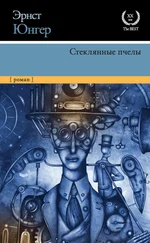Pouilly, Burgundy, champagne, just a thimbleful of each. On the occasion of this breakfast, around twenty policemen were stationed in the vicinity.
PARIS, 11 OCTOBER 1941
Went to the Monte Carlo with Nebel in the afternoon, where we discussed the matter of the safe. He had just returned from leave and told me that a novel by Thomas Mann, Ein Tag aus dem Leben des alten Goethe [ A Day in the Life of the Aged Goethe ] [13] A reference to Thomas Mann’s novel Lotte in Weimar [ The Beloved Returns , 1939].
was being circulated clandestinely.
Later called on Consul General Schleier on Avenue Suchet. Conversation with Drieu La Rochelle, editor of the Nouvelle Revue Française , focusing on Malraux, whose career I have followed ever since I got my hands on his novel La Condition Humaine [ The Human Condition ] many years ago. Since then, I’ve considered him one to be of those rare observers with an eye for the war-ravaged landscape of the twentieth century.
Went to see Speidel in the evening, who had just been on the telephone with the quartermaster general. Snow has already fallen in the central area of the eastern front.
PARIS, 13 OCTOBER 1941
The morning was brisk, but I spent a pleasant hour in the Tuileries Gardens in the afternoon. It is impossible to be bored out in the sunlight. There we bathe in the fountain of time. Then went to the Quais de la Seine, where I bought a large-format “Temptation of Saint Anthony” by Caillot in good condition. At the same stall, I pored over a colored drawing of the familiar motif of the bird that must be coaxed back into its cage. The pair of lovers who reclined, half-exhausted and half-revived, on a Biedermeier sofa, wore thin, tight clothes. Details of their anatomy were not exactly obvious, but nevertheless could be discerned in the contours of the cloth, resembling impressions of shells and ammonites. In this genre, it is especially important to set a trap for the imagination. This is the art of the embarrassing moment.
Herpetology Museum—first in the empirically zoological section, then to works of art and ethnographic collections. Finally, the snake as symbol of magic and cultic power. All this in a southern landscape between labyrinthine gardens and ranges of cliffs crisscrossed with dazzling, winding paths. A flight of marble steps leads upward, and on it black, bronze, and multicolored bodies laze in the sunlight. The entrance is treacherous, discovered only by the initiated. In the background, near caves, are further buildings—like baths and a temple of Asclepius.
The snake as primeval power is an archetype, a Platonic idea. The images, whether of life or of the mind, advance toward it without ever reaching it. There is a similarity here to worms, round fish, reptiles, and dinosaurs or to Chinese dragons and fabulous creatures of all sorts.
It would good for the “house” [project] to put the world into architectonic order—from its dark cellars to its observatories. The staircases where encounters occur are important. Life takes place in the rooms, chambers, and halls. This is visible in all its detail, as if in pictures painted in shimmering dreamy hues. We move as though on stage but at the same time remain spectators. “Pilgrim’s Progress.” The manuscript would have to be kept partly in the form of stage directions. Add to this the audial dimension: cries, which significantly simplify life’s relationships. “ On tue les nôtres .” [They are killing our own.] “They’re interrogating the children.” The populated area would have to be paced off; anyone doing so would need to be of advanced age and have extensive experience.
Individual rooms: the chamber of irrevocable decisions as a Platonic ideal of all courtrooms. The declassification office. Elevators for the more sophisticated who no longer need steps. A cabinet of mirrors.
PARIS, 14 OCTOBER 1941
Went to the [Hotel] George V in the evening with Speidel. Sieburg was here, who with his pleasant nonchalance personifies all the skills of the cosmopolitan journalist and, even more important, with pronounced self-confidence that underscores and magnifies his talent. To judge by his horoscope, I can only assume the middle of the transit of Jupiter plus a good position of the sun. As is common with this kind of aspect, the shape of the face departs from oval and approximates round. This impression is intensified by the hair sticking straight out from his head.
He thinks the defeat of France is irreversible, but on the other hand, he believes in the continued predominance of this country in matters of taste and culture.
PARIS, 15 OCTOBER 1941
Went with Speidel to Sacha Guitry’s for lunch on Avenue Elisée Reclus. In front of the house, on city property, there stands a bust of his father, the actor Lucien Guitry and in the garden, a female torso in sexual ecstasy by Rodin.
When he welcomed me, Guitry handed me a folder containing one letter each by Octave Mirbeau, Léon Bloy, and Debussy—the three authors whom we had discussed at our first meeting—and he told me to add these pieces to my collection. The little sheet by Bloy is especially lovely, with its personal comments and the oversize penmanship typical of him.
We then looked at books in manuscript, among them Flaubert’s Ėducation Sentimentale [ Sentimental Education , 1869]. In a work by Bergson, he showed me the author’s dedication “ À Sacha Guitry, un admirateur ” [To Sacha Guitry from an admirer] and pointed out the un [an] as opposed to son [his] as being especially choice. Molière’s travel case filled with first editions of his plays, Napoleon with all his marshals of the Empire cast in lead, and many other things.
In the bedroom. Over the bed, the wall has been broken through, as in dining rooms, so as to let plates be passed through from the kitchen. This opening leads to his wife’s bed—“but it is a bit tight for her, master,” says one of the guests. “Being Madame Guitry comes at a price,” he is promptly informed by the slender lady of the house.
A colleague from the theater arrives late: “the most beautiful woman in Paris—twenty years ago,” Guitry whispers to me before greeting her.
At the table. The salad was served on silver, the ice cream on a heavy gold service that had belonged to Sarah Bernhardt. I was again astonished by his effusive personality, especially when he told anecdotes of his encounters with royalty. When talking about different people, he would accompany his words with expressive gestures. During the conversation, he used his large horn-rimmed glasses to great dramatic effect.
It dawns on me that in the case of such talent, the whole reservoir of personality that a marriage can possess gets used up by the man. And yet my first impression is corrected, because at the same time, this is surely a human being with real heart. I caught a glimpse of the fecund materia prima [primal material] that is the root of all character. It is true that we enjoy ourselves in the aura of such idiosyncrasy, and this feeling of well-being produces the climate that promotes his personality.
PARIS, 18 OCTOBER 1941
At noon in the Ritz with Carl Schmitt who gave a lecture the day before yesterday on the different significance of land and sea under international law. Colonel Speidel, Grüninger, and Count Podewils also there. Conversation about current scholarly and literary controversies. Carl Schmitt compared his situation to that of the white captain in Melville’s Benito Cereno , who was held captive by black slaves, and he quoted the proverb: “ Non possum scribere contra eum, qui potest proscribere .” [I cannot write against him who can proscribe.] [14] Quotation from Ambrosius Theodosius Macrobius, fifth-century Roman writer.
Читать дальше

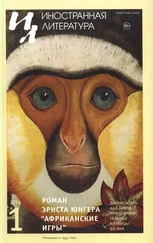

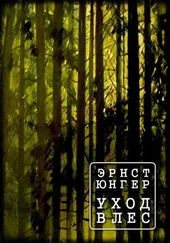

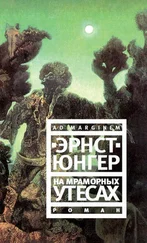

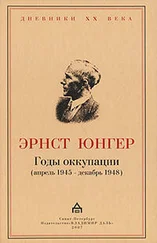
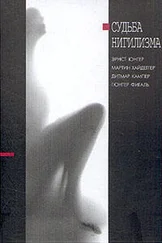
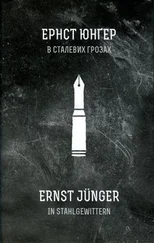
![Эрнст Юнгер - Стеклянные пчелы [litres]](/books/410842/ernst-yunger-steklyannye-pchely-litres-thumb.webp)
